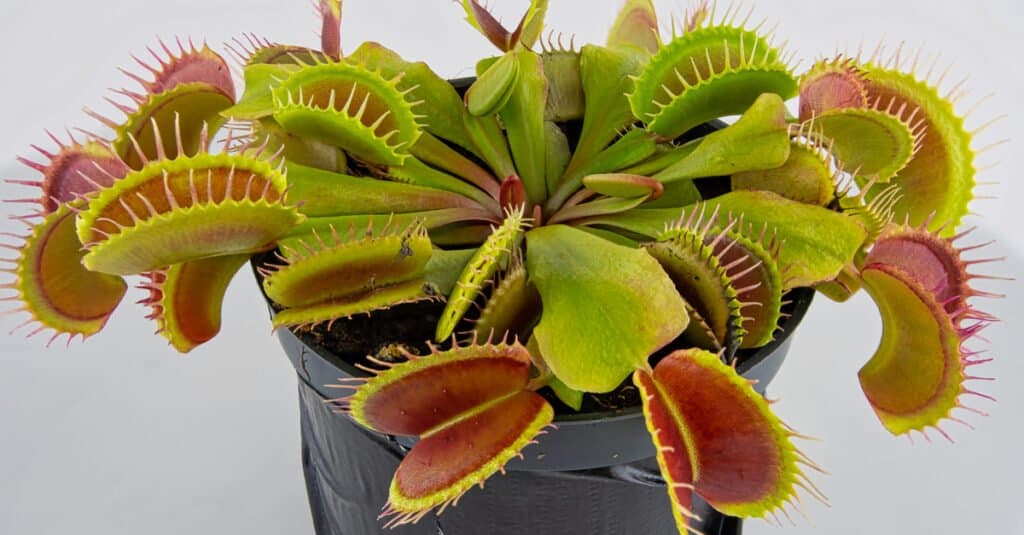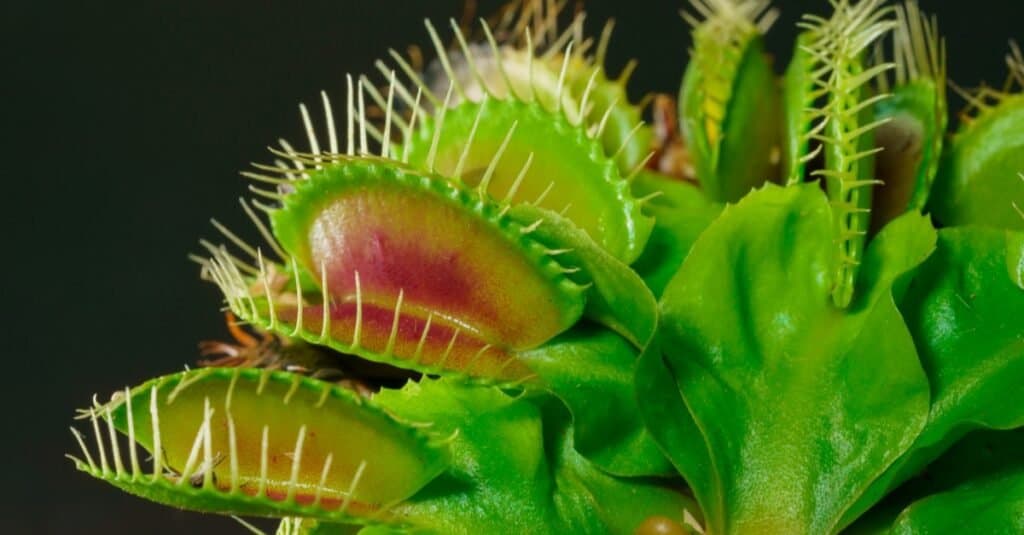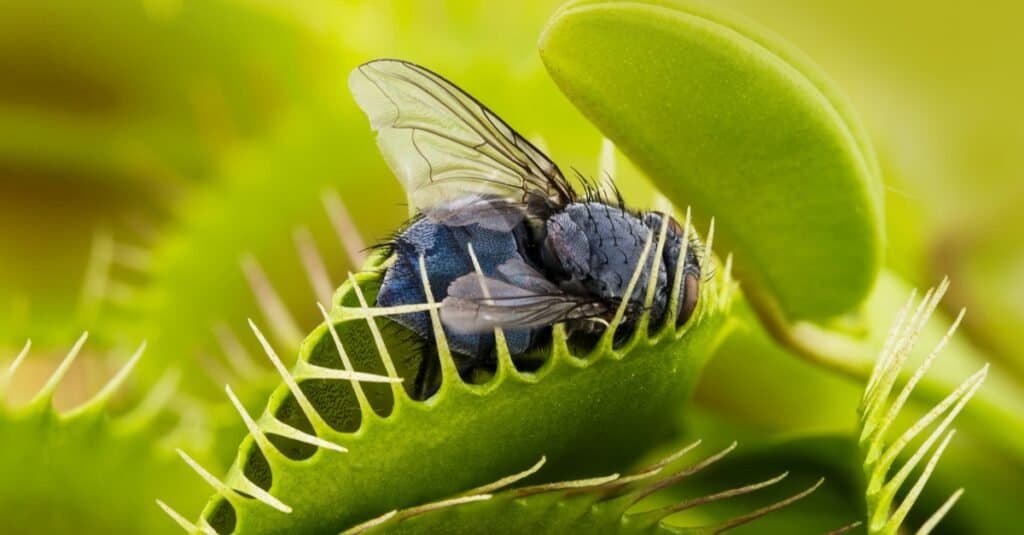Propagating a Venus Flytrap: How to Grow a Carnivorous Plant From Seed
Welcome to the wild world of Venus Flytraps, the tiny carnivorous wonders that capture bugs with jaws like nature’s own mousetraps. Growing these fascinating plants from seed might seem like a daunting task, but fear not! With a little know-how and a dash of patience, you can nurture your own thriving Venus Flytrap colony right at home.
From selecting the right seeds to creating the perfect growing environment, we’ll guide you every step of the way. So, roll up your sleeves and get ready to cultivate your own mini army of these captivating botanical beasts!
What is a Venus Flytrap?
Venus Flytraps, scientifically known as Dionaea muscipula, are intriguing carnivorous plants renowned for their unique trapping mechanism. Classified under the family Droseraceae, they are herbaceous perennials that stand out for their distinct appearance. These plants typically grow up to four to six inches in height and feature rosettes of hinged leaves, each divided into two lobes with serrated edges. Their vibrant green coloration and reddish-pink interiors make them instantly recognizable.
Habitat and Native Range
Venus Flytraps are native to the southeastern United States, primarily found in the boggy regions of North and South Carolina. They thrive in nutrient-poor, acidic soils, specifically in areas with high sunlight exposure. Their natural habitat consists of wetlands and damp, swampy terrains, where they have evolved to adapt to their unique environment.
Carnivorous Behavior
What sets Venus Flytraps apart is their carnivorous nature. They have evolved this behavior due to the nutrient-deficient conditions in which they grow. These plants lure, capture, and digest insects to supplement their diet with essential nutrients like nitrogen and phosphorus. The trapping mechanism is triggered when tiny trigger hairs on the inner surface of the lobes are stimulated by a visiting insect.
Mechanism of Capture
Upon stimulation, the trap rapidly snaps shut, forming a cage-like structure around the prey. This closure occurs within a fraction of a second, preventing escape. The lobes then seal shut tightly, creating an airtight environment that helps prevent the escape of digestive enzymes. Over the course of about ten days, the plant secretes enzymes that break down the insect’s soft tissues, absorbing the released nutrients to nourish itself.
Life Cycle and Reproduction
Venus Flytraps reproduce through both seeds and vegetative propagation. In spring, they produce small white flowers on long stalks, which attract pollinators like bees. Once fertilized, the flowers develop into seed capsules, each containing numerous tiny seeds. In addition to seed production, these plants can form new rosettes by sending out runners or offshoots, allowing them to colonize an area.
Conservation Status
Due to habitat destruction and illegal poaching for the horticultural trade, Venus Flytraps are currently listed as a vulnerable species. Conservation efforts, such as protecting their natural habitat and cultivating them sustainably, are essential to ensure the survival of these fascinating carnivorous plants.
Venus Flytraps are captivating plants with their carnivorous behavior, intriguing trapping mechanism, and unique appearance. Native to the southeastern United States, they serve as a reminder of the incredible diversity of life on Earth and the importance of conservation to preserve these natural wonders for future generations.

©Craig Russell/Shutterstock.com
Are Venus Flytraps Hard to Grow?
Growing Venus Flytraps can be a fascinating but somewhat challenging endeavor for plant enthusiasts. While they may not be the easiest plants to cultivate, their unique features and carnivorous behavior make them a rewarding addition to any collection.
Specific Growing Conditions
One reason why Venus Flytraps are considered moderately difficult to grow is their specific environmental requirements. These plants are native to nutrient-poor, acidic soils in the southeastern United States, and replicating their natural habitat can be demanding. They thrive in bright, direct sunlight for at least six hours a day and require high humidity levels, which can be a challenge for many indoor growers.
Soil and Watering
The soil in which Venus Flytraps are planted is crucial. They need well-draining, acidic soil, such as a mix of peat moss and perlite. Watering is another aspect that requires attention. They prefer to sit in distilled or rainwater, as tap water’s minerals can harm them. It’s essential to keep the soil consistently moist, but not waterlogged, to mimic their native boggy conditions.
Feeding and Dormancy
Feeding Venus Flytraps is an intriguing aspect of their care. While they can capture insects on their own, supplemental feeding can accelerate their growth. Live insects, such as small ants or flies, should be introduced to their traps occasionally. However, overfeeding can weaken the plant, so moderation is key.
During the winter months, Venus Flytraps enter a dormancy period where they require reduced light and lower temperatures. This dormancy can be tricky to manage for indoor growers, but it is essential for the plant’s long-term health.
However, while Venus Flytraps present some challenges in terms of their specific growing conditions and care requirements, they are not impossible to cultivate successfully. With proper attention to their needs, these captivating carnivorous plants can thrive and provide a unique and rewarding experience for those willing to put in the effort. Let’s take a look at how to grow a Venus Flytrap and provide the right ongoing care.

©sawinimages/Shutterstock.com
How to Grow a Venus Flytrap From Seed
Growing Venus Flytraps from seeds allows you to witness the entire life cycle of these intriguing carnivorous plants, from germination to maturity. While it requires patience and attention to detail, the process is both accessible and fulfilling.
Step 1: Gather Your Materials
Before you begin, gather the necessary materials:
- Venus Flytrap seeds: You can obtain seeds from reputable nurseries or online suppliers.
- Seed-starting containers or pots: Small plastic pots or trays work well.
- Growing medium: Use a mix of sphagnum moss and perlite or a specialized carnivorous plant soil mix.
- Distilled or rainwater: Venus Flytraps are sensitive to minerals in tap water, so avoid using it.
- Transparent plastic cover or plastic wrap: To create a mini greenhouse effect.
Step 2: Preparing the Growing Medium
Venus Flytraps thrive in nutrient-poor, acidic soil. To create an ideal growing medium, combine sphagnum moss and perlite in equal parts or use a pre-made carnivorous plant soil mix. Ensure the medium is well-moistened with distilled or rainwater, maintaining a consistently damp but not waterlogged environment.
Step 3: Sow the Seeds
Carefully spread the Venus Flytrap seeds evenly across the surface of the prepared growing medium. Do not bury the seeds, as they require light for germination. Gently press them into the soil to ensure good seed-to-soil contact.
Step 4: Create a Mini Greenhouse
To simulate the high humidity environment Venus Flytrap seeds need for germination, cover the seed containers with a transparent plastic cover or plastic wrap. This creates a mini greenhouse effect, trapping moisture and warmth around the seeds. Place the containers in a location with bright, indirect sunlight.
Step 5: Maintain Ideal Temperature
Venus Flytrap seeds germinate best at temperatures around 70 to 75 degrees F. Use a thermometer to monitor the temperature, and consider using a heat mat if necessary to maintain consistent warmth.
Step 6: Be Patient
Germination can take anywhere from a few weeks to several months, so be patient. Check the containers regularly to ensure the growing medium remains moist but not soggy. If you see mold or algae growth, lightly mist the surface with distilled water to discourage it.
Step 7: Transplanting Seedlings
Once your Venus Flytrap seedlings have developed several true leaves and are large enough to handle, it’s time to transplant them into their individual pots. Carefully lift each seedling from the communal container, ensuring you retain as much of its delicate root system as possible. Plant each seedling in its own pot filled with the same growing medium used for germination.
Step 8: Provide Adequate Light
Place the potted seedlings in a location with bright, direct sunlight. Venus Flytraps require at least 6 hours of sunlight daily to thrive. If you are growing them indoors, consider using artificial grow lights to supplement natural light.
Step 9: Watering and Feeding
Water the seedlings by setting the pots in a tray filled with distilled or rainwater. Allow the water to be drawn up from the bottom, keeping the soil consistently moist but not waterlogged. It’s essential to provide an occasional insect for your Venus Flytraps to catch and feed on, as this aids in their growth and development. Small, live insects like flies or ants can be introduced to their traps.
Step 10: Dormancy Period
Venus Flytraps go through a winter dormancy period, usually from late fall to early spring. During this time, their growth slows, and they require reduced light and lower temperatures. If growing them indoors, move the plants to a cooler location with indirect sunlight. Reduce watering but ensure the soil doesn’t completely dry out.
Step 11: Monitoring and Care
Regularly monitor your Venus Flytraps for signs of pests, disease, or overcrowding. Remove any dead leaves or insects caught in their traps to maintain plant health. As the plants grow, they may need to be repotted into larger containers to accommodate their expanding root systems.
Growing Venus Flytraps from seed is a captivating journey that allows you to observe these remarkable plants at every stage of their development. While it requires attention to detail, patience, and adherence to their specific needs, the reward of nurturing a Venus Flytrap from a tiny seed to a mature, carnivorous plant is truly satisfying. Follow these steps carefully, and you’ll be well on your way to successfully cultivating these captivating carnivorous wonders.

©Kuttelvaserova Stuchelova/Shutterstock.com
Maintainance and Care Tips for Venus Flytraps
Too ensure the health and longevity of your Venus Flytraps, it’s crucial to provide them with proper care and maintenance. The following are some essential tips to help you cultivate healthy and thriving Venus Flytraps!
1. Choose the Right Location
Selecting the right location is fundamental to Venus Flytrap care. These plants require plenty of bright, direct sunlight to thrive. Place them outdoors in a sunny spot where they can receive at least six hours of sunlight daily. If growing them indoors, consider using artificial grow lights to provide adequate illumination.
2. Use the Correct Growing Medium
Venus Flytraps thrive in nutrient-poor, acidic soil. Use a mixture of sphagnum moss and perlite, or opt for a specialized carnivorous plant soil mix. Ensure that the growing medium is well-draining to prevent waterlogging, which can harm the plant’s roots.
3. Watering with Distilled or Rainwater
Venus Flytraps are sensitive to minerals found in tap water. Always use distilled or rainwater to water your plants. Allow the soil to remain consistently moist but not waterlogged. To water effectively, place the pot in a tray filled with distilled water and let the soil wick up the moisture.
4. Maintain Proper Humidity
Venus Flytraps require high humidity levels to thrive. To create a suitable environment, you can place a tray of water near your plants or use a humidifier, especially if you’re growing them indoors. Misting the plants regularly can also help increase humidity.
5. Feed Them Sparingly
While Venus Flytraps are capable of capturing insects on their own, providing occasional supplemental feeding can boost their growth. Offer small live insects like flies or ants to the traps. However, avoid overfeeding, as it can weaken the plant. One or two insects per trap every four to six weeks should suffice.
6. Prune Dead Leaves and Traps
As Venus Flytraps grow, their leaves and traps may die off naturally. It’s essential to trim these dead or blackened parts to maintain the plant’s overall health and appearance. Use clean scissors or pruning shears to snip away the dead growth.
7. Winter Dormancy Period
Venus Flytraps go through a winter dormancy period, typically from late fall to early spring. During this time, their growth slows, and they require different care. If grown outdoors, they can withstand cold temperatures and will go dormant naturally. For indoor plants, move them to a cooler location with indirect sunlight and reduce watering but ensure the soil doesn’t completely dry out.
8. Prevent Pests and Diseases
Keep an eye out for common pests like aphids, spider mites, and mealybugs, as well as fungal diseases. If you notice any issues, treat them promptly using insecticidal soap or neem oil for pests, and a fungicide for diseases. Isolate affected plants to prevent the spread of pests or infections.
9. Repotting When Necessary
As Venus Flytraps grow, they may outgrow their containers. When you observe that the plant’s growth is becoming restricted or the pot is filled with roots, it’s time to repot. Choose a pot that is slightly larger and refresh the growing medium as well.
10. Patience and Observation
Finally, remember that Venus Flytrap care requires patience and careful observation. Each plant is unique, and its needs may vary slightly. Regularly monitor your plants for signs of health or stress, and adjust your care routine accordingly.
With proper care and attention to their specific requirements, Venus Flytraps can thrive and provide you with a fascinating and unique gardening experience. By following this guide to growing them from seed and our top care tips, you can enjoy the captivating beauty and carnivorous behavior of these extraordinary plants for years to come. Happy planting!









